The Sopranos’ New Jersey: Exploring Tony’s Iconic Haunts afresh
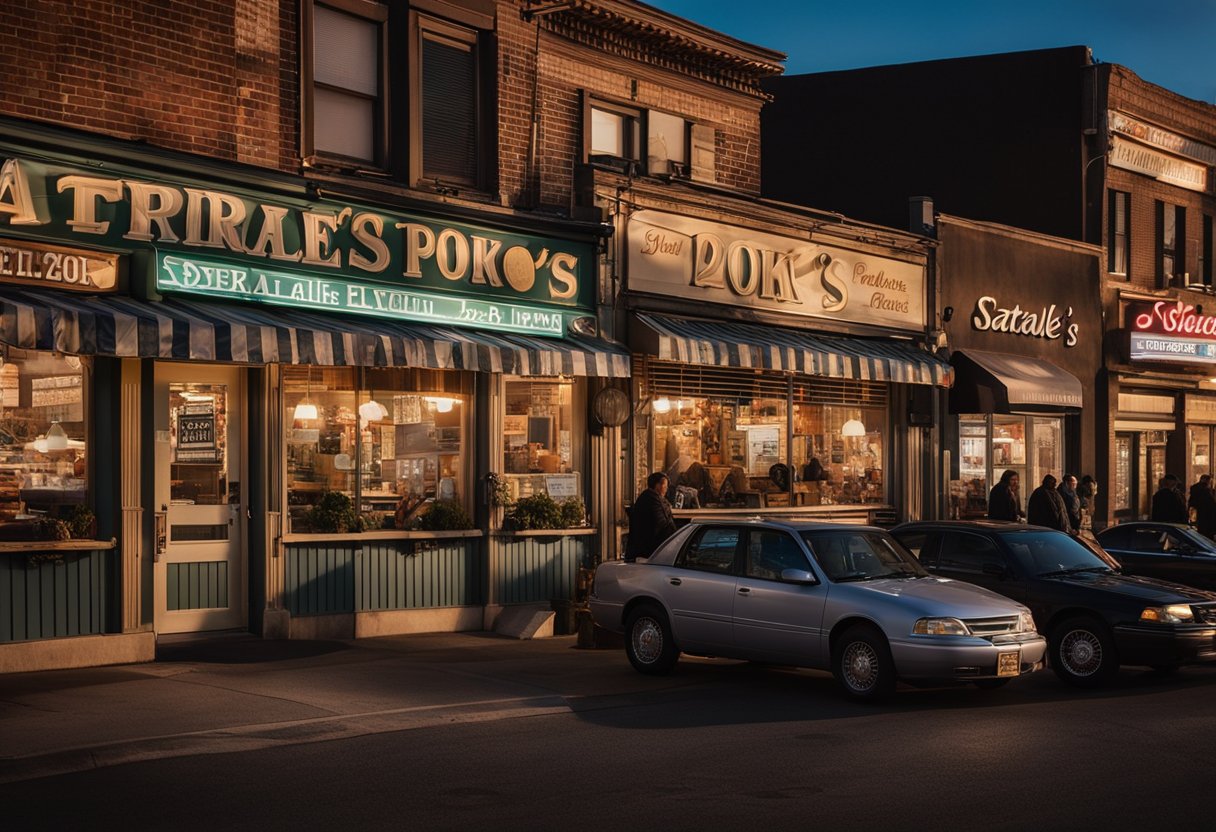
Updated On: April 07, 2024 by Marwa Alaa
Venturing into the heartland of New Jersey through the lens of The Sopranos is more than a trip down memory lane; it’s an immersive journey into a cultural phenomenon that has etched its name in television history. Since its debut on HBO, this groundbreaking series has brought to life the complex narrative of Tony Soprano and his multifaceted world of family, loyalty, and power. As we revisit the iconic locations that served as Tony Soprano’s turf, we find that these streets and storefronts are characters in their own right, each adding a layer to the storytelling canvas of The Sopranos.
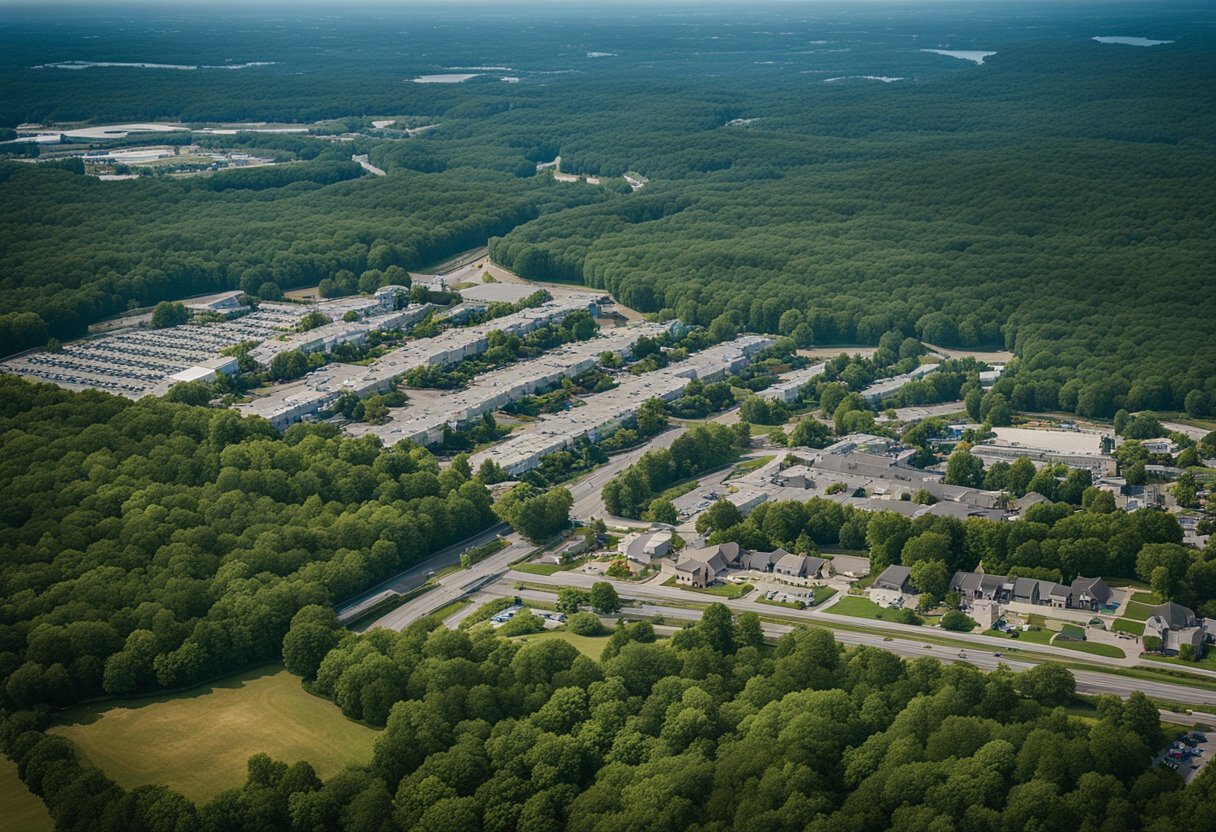
The series’ influence extends well beyond its fictional narratives, offering an unvarnished look into the societal and economic frameworks of the time. Through the portrayal of Tony Soprano’s intricate persona, the show invites us to examine the dichotomies within ourselves and society. The cultural footprint of The Sopranos is undeniable, as it continues to shape narratives and character development in television today, setting a standard for the medium that resonates with audiences and creators alike.
Tony Soprano: The Complex Protagonist
Before exploring the depths of Tony Soprano’s character and the impact of James Gandolfini’s performance, it’s essential to understand that Tony represents the quintessence of the Italian American mobster ethos while exhibiting the vulnerabilities of a man grappling with modern life’s demands.
Character Analysis
Tony Soprano, the iconic mob boss at the heart of The Sopranos, embodies the complexity of the criminal underworld and the personal struggles that come with power. Audiences encounter a character who is at once commanding and yet deeply troubled, with his internal battles and family dilemmas providing a raw examination of his lifestyle’s contradictions.
He navigates the dichotomy of being a family man and a Mafia capo, adhering to codes of loyalty within his crime family while facing the dissonances these codes create in his personal life. This nuanced portrayal showcases not just a caricature of a mob boss omnipotent and untouchable — but a full-fledged person who experiences a spectrum of emotions and moral quandaries.
James Gandolfini’s Portrayal
It is impossible to discuss Tony Soprano without acknowledging the brilliance of James Gandolfini‘s portrayal, a performance that earned him multiple awards and universal acclaim. Gandolfini brought an unprecedented sense of authenticity and depth to the character, capturing the multifaceted nature of Tony’s personality with a silent intensity and volatile emotional undercurrents.
Gandolfini’s embodiment of Tony reshaped the landscape of television protagonists, paving the way for a new wave of anti-heroes. His ability to humanise a character that could have easily been unrelatable is a testament to his skill as an actor and his understanding of the human psyche.
The Sopranos: Behind the Scenes
In creating The Sopranos, David Chase brought his novel-like vision to television, revolutionising the medium with complex characters and layered storytelling. Our focus here is to explore the conception and execution of this landmark series, which began airing with its pilot episode on 10 January 1999.
David Chase’s Vision
David Chase intricately designed The Sopranos with a cinematic scope, aiming to delve into the psychological depth of his characters. He created a world where audiences could experience the dichotomy of the protagonist Tony Soprano – a New Jersey mob boss balancing the demands of his crime family with the challenges of his domestic life. Chase’s ground-breaking narrative structure and character-driven plots set a new standard for television dramas.
Production and Filming
The production team under David Chase’s leadership meticulously chose filming locations that captured the essence of New Jersey, serving as an authentic backdrop to Tony Soprano’s story. Notable locations included a collection of recognisable spots such as the Satin Dolls nightclub, which served as the Bada Bing club in the show, and Holsten’s, an old-school ice cream parlour which featured in the series finale. Each location was selected for its ability to contribute to the series’ gritty and realistic atmosphere.
Filming the pilot episode, which first introduced viewers to the world of Tony Soprano, involved a seamless blend of Chase’s creative vision and keen attention to the smallest production details. This pilot laid the foundation for what would become a culturally significant and critically acclaimed series, leading the charge into the new golden age of television.
Setting the Scene: New Jersey Landmarks
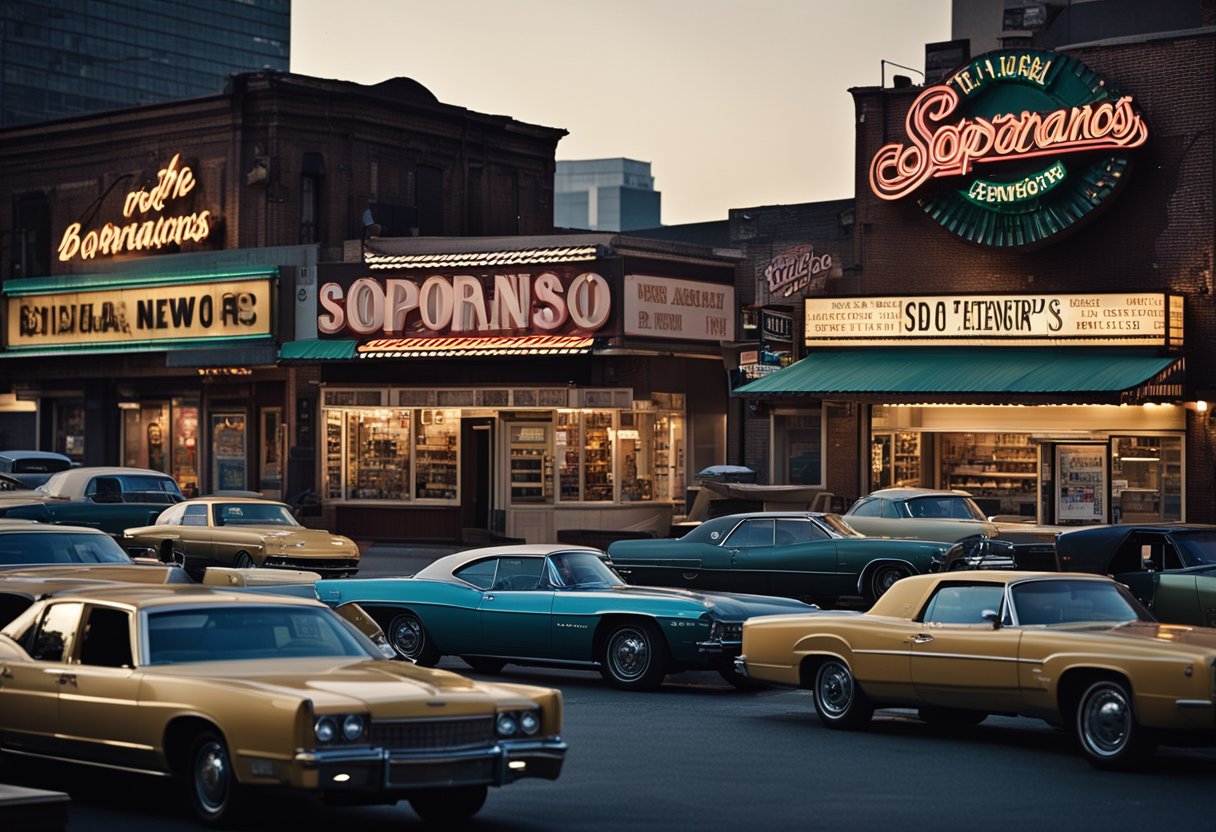
New Jersey’s setting played a pivotal role in creating the authentic backdrop for The Sopranos. We take a journey through these familiar locales, immortalised by Tony Soprano’s journey.
North Caldwell and Suburban Houses
In North Caldwell, the Soprano family house stands as an emblem of the suburban dream portrayed in the show. The sprawling 5,600-square-foot property elevates itself from a mere filming location to a piece of television history. Fans routinely admire the elegant home from afar, recognising its facade as a symbol of the Soprano household’s complexities.
Satriale’s and Satin Dolls
Satriale’s Pork Store functioned as the meeting ground for Tony and his associates, providing a front for the mob’s daily operations. Although a set piece, it was quintessential in displaying the show’s roots within New Jersey’s culture.
Conversely, Satin Dolls—the real-life establishment for the show’s fictional Bada Bing club—is a tangible piece of The Sopranos lore. Located in Lodi, this lounge bears the unique distinction of being the site where pivotal scenes were shot, tangibly connecting fans to the series’ most dramatic moments.
New Jersey is dotted with landmarks that bring to life The Sopranos’ fictional narrative. From the streets of North Caldwell to iconic establishments like Holstens and Pizza Land, these sites provide a veritable map for enthusiasts looking to walk in Tony Soprano’s footsteps. Holstens, in particular, known for its delicious homemade ice cream, holds a special place as the setting for the show’s enigmatic final scene. Meanwhile, Pizza Land gained fame from its appearance in the opening credits, continuing to be a favoured spot amongst fans to grab a slice of authentic New Jersey pizza. Each location cements New Jersey’s connection to this seminal series, bringing fans closer to the world inhabited by one of television’s most complex characters.
The Cultural Impact of The Sopranos

Before the first H3, it’s essential to recognise the magnitude of influence The Sopranos has had. As a groundbreaking series, it not only reshaped television narratives but also had a profound effect on both Italian American representation and the permeation of its distinctive lingo and iconography into popular culture.
Italian American Representation
The Sopranos provided a multifaceted portrayal of Italian American life, far surpassing any previous depictions on television. With a cast inclusive of Italian American actors, the series provided an authentic representation that resonated with many viewers. Series like these played a significant role in both reflecting and shaping the perception of Italian American culture, from family dynamics to customs and the intricate balance between traditional values and modern challenges.
Sopranos Lingo and Iconography
The series introduced a host of phrases to the public lexicon, including “Gabagool,” an American-Italianised term for ‘capicola’. Furthermore, The Sopranos‘ iconography has become deeply influential, with locations like the Bada Bing! Club symbolising Tony Soprano’s complex world of personal and professional entanglements. These elements from the show have firmly lodged themselves in the collective consciousness, echoing the show’s themes and contributing to its enduring legacy.
Cast and Characters of The Sopranos
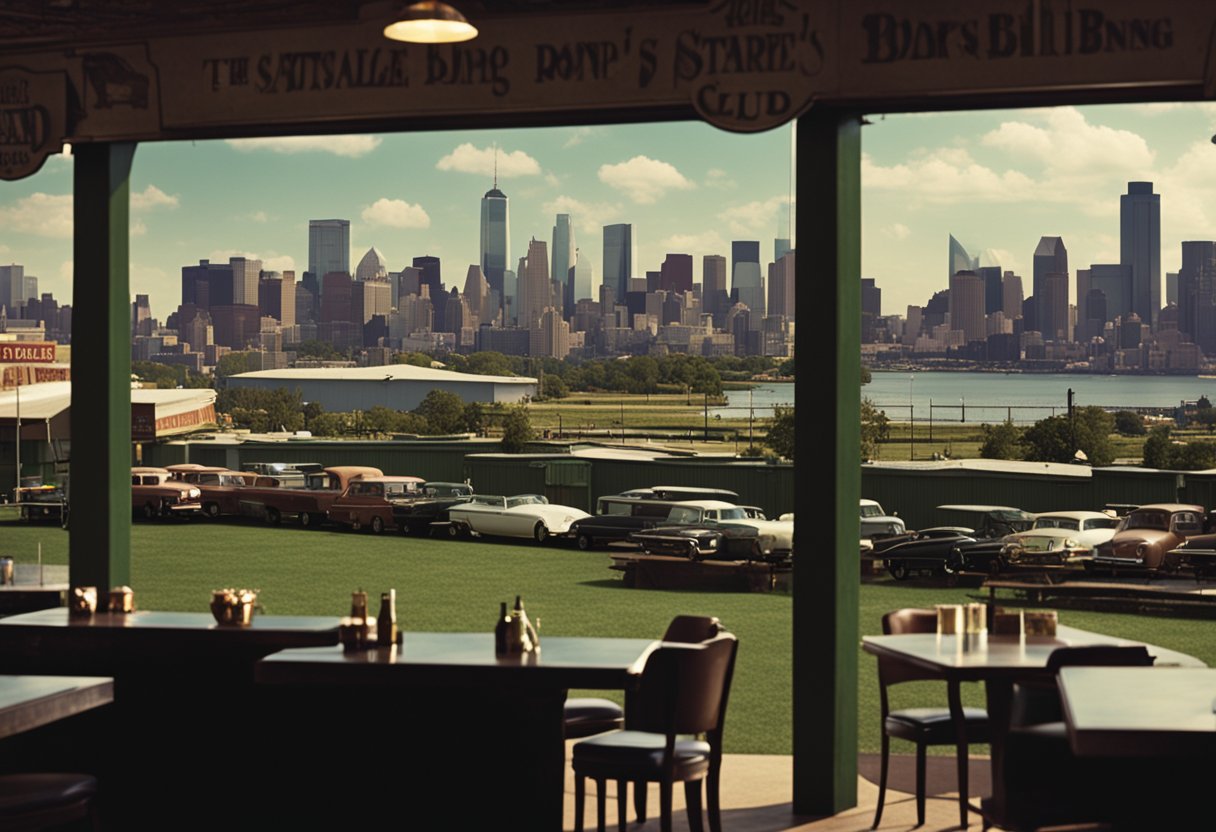
In this section, we explore key members of The Sopranos cast, delving into their roles and the significance they brought to this iconic series.
Livia Soprano: The Matriarch
Livia Soprano, played by Nancy Marchand, was Tony Soprano’s formidable mother. Her complex relationship with Tony drives many of the subplots, illustrating the family’s dysfunctional dynamics and her influence on her son’s life both inside and outside the mob.
Vincent Pastore and Steve Schirripa
Vincent Pastore portrayed Salvatore “Big Pussy” Bonpensiero, a close friend and mob enforcer for Tony Soprano. His character’s arc was central to the early seasons, leaving a lasting impact on the storyline and viewers alike.
Steve Schirripa played Bobby Baccalieri, known for his gentle nature in contrast to the typical mob persona. His evolution from a background player to a prominent figure in Tony’s inner circle provided a compelling narrative throughout the series.
Other Notable Members
The series is replete with remarkable characters, each bringing a layer of complexity and depth to the narrative. Characters portrayed by actors like Michael Imperioli as Christopher Moltisanti and Aida Turturro as Janice Soprano contribute significantly to the multifaceted world of The Sopranos, offering viewers an engaging glimpse into the DiMeo crime family.
The Sopranos on Location
In this section, we’ll explore the iconic locations from The Sopranos that rooted the series firmly in New Jersey, focusing on the spots that framed the life of Tony Soprano and became landmarks for fans.
Holsten’s and the Final Scene
Holsten’s Brookdale Confectionery is best known for the final scene of The Sopranos, providing one of television’s most ambiguous endings. The family’s last gathering, over plates of onion rings, has immortalised this 1950s-style diner. It has become a pilgrimage site where fans can sit in the very booth the Soprano family occupied, a testament to the show’s enduring legacy.
Iconic New Jersey Eateries
Numerous restaurants throughout New Jersey were featured in The Sopranos, each one showcasing the state’s rich culinary scene. From pizzerias to diners, the show celebrated local eateries and Italian cuisine, becoming an integral part of the storytelling. The likes of Satriale’s Pork Store and Artie Bucco’s Nuovo Vesuvio were not just set pieces but characters in their own right.
Route 17 and Kearny’s Presence
Route 17 runs through the heart of New Jersey, embodying the state’s industrial edge that was frequently depicted in the series. Its endless rows of stores and diners paint a vivid image of the Garden State. Meanwhile, Kearny served as the backdrop for many scenes, its streets echoing with echoes of Tony Soprano’s footsteps. This township’s presence in the show offered a glimpse into the everyday stomping grounds of the characters, grounding the high-stakes drama in a relatable reality.
Revisiting The Sopranos‘ Legacy
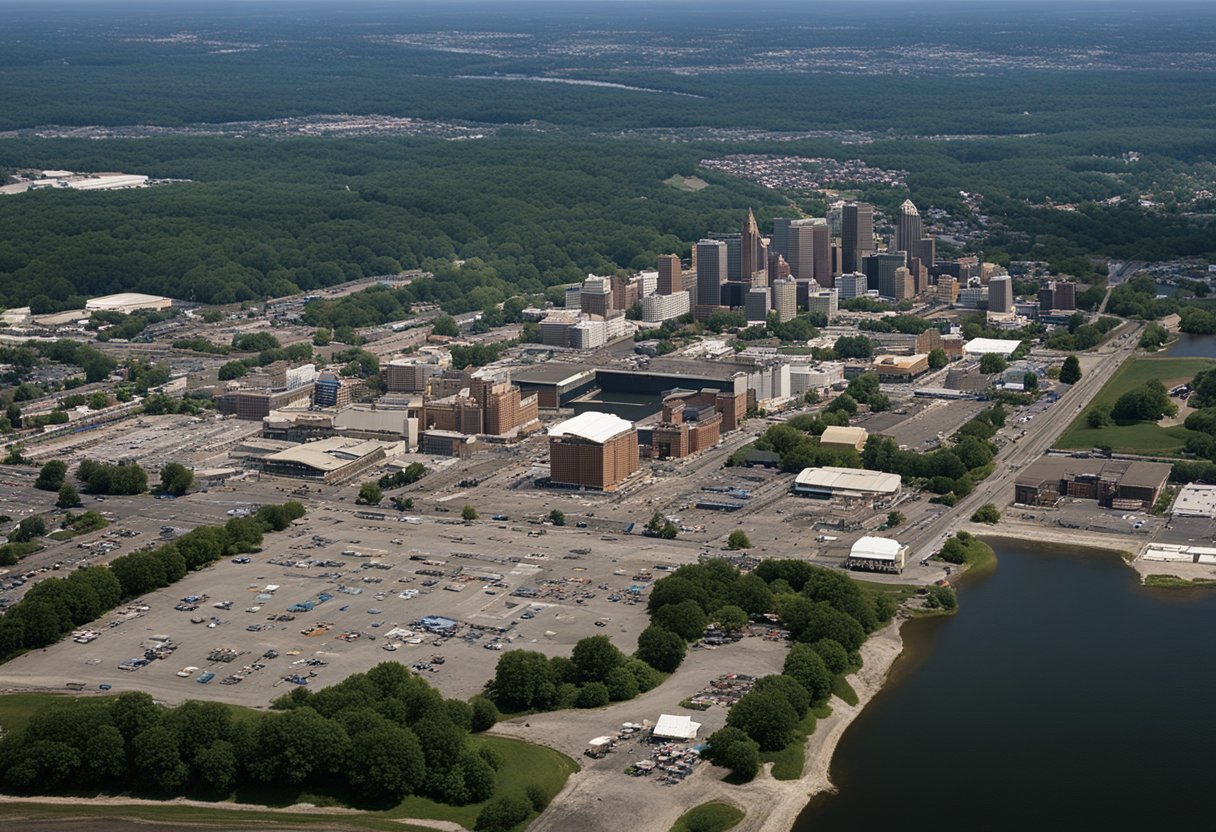
We explore the enduring impact of The Sopranos on popular culture, noting its origins on 10 January 1999 and the continued significance of its storytelling through the release of the prequel, ‘The Many Saints of Newark’.
Prequel: The Many Saints of Newark
‘The Many Saints of Newark’ takes us back to the roots of Tony Soprano’s tale, offering insights into the formative years that would shape the iconic character we first met over two decades ago. This journey through Tony’s early experiences enriches our understanding of the complex world he inhabited.
Soprano Family’s Influence on Pop Culture
The Soprano family permanently imprinted itself on popular culture with its raw portrayal of mobster life set against the suburban backdrop of New Jersey. Our immersion into their world challenges the conventions of a typical U.S. family, providing us with a sharp reflection on the American dream.
Economics and Society in The Sopranos
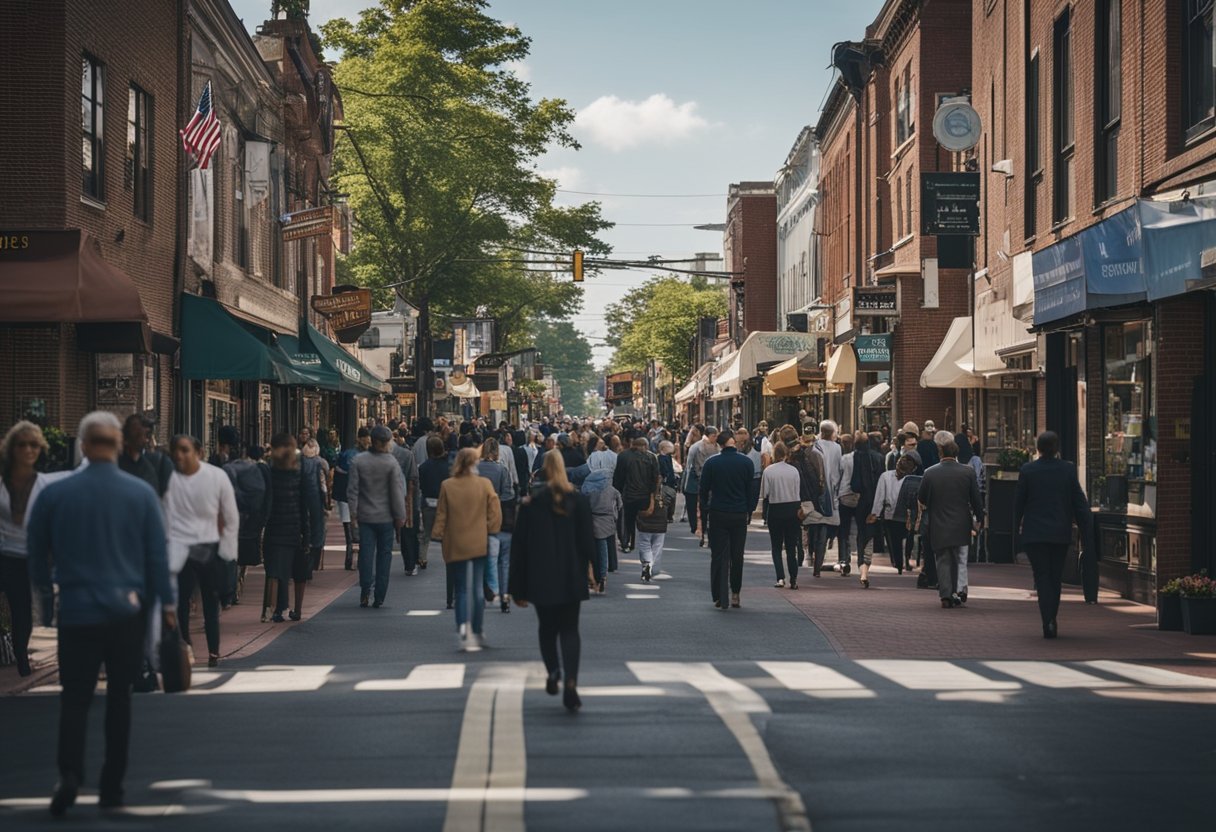
In The Sopranos, economics and societal interactions are intricately woven into the fabric of the story. The series presents a sharp reflection of the tensions and dynamics at play within New Jersey’s businesses and communities.
Barone Sanitation Business
The fictitious Barone Sanitation company serves as a front for Tony Soprano’s not entirely legitimate business dealings. Splicing the waste management industry with organized crime, it represents the complex interplay between the underworld economy and legitimate business operations. Barone Sanitation is a microcosm that exemplifies how such businesses can be leveraged for money laundering and exerting influence over the community.
North Jersey’s Economy and Authenticity
The Sopranos faithfully captures the economic pulse of New Jersey, affectionately known as the Garden State. It highlights the dichotomy between the state’s middle-class aspirations and the harsh realities of its capitalist ventures. The show underscores the pride in regional authenticity, from the diners and strip malls to the smokestacks dotting the horizon. This authenticity articulates North Jersey’s socio-economic narrative, offering a poignant backdrop to the lives of the characters.
The Filmography of The Sopranos
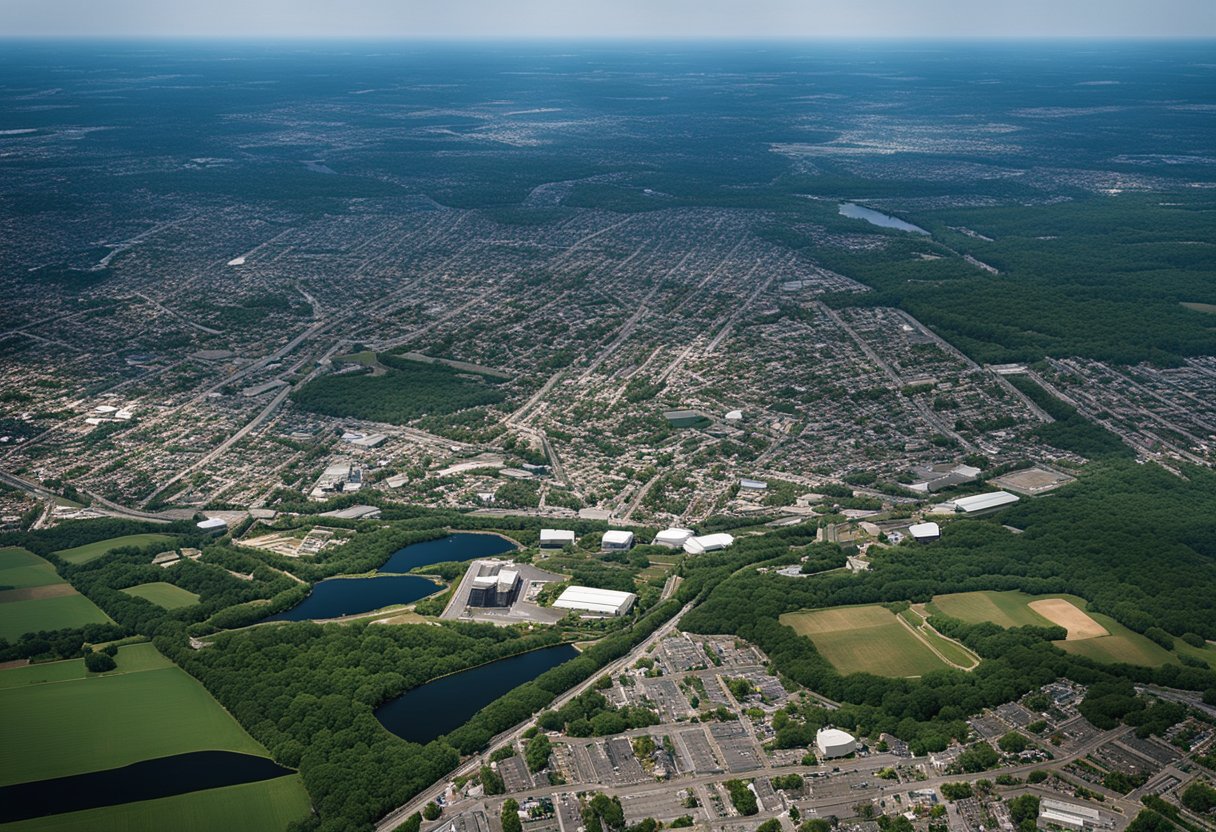
In crafting the esteemed HBO Series The Sopranos, the production team set new standards for television storytelling, using film techniques typically reserved for cinema. The show’s authentic representation of New Jersey as the backdrop of Tony Soprano’s life became iconic across its six seasons.
Crafting the HBO Series
The Sopranos emerged as a pioneering drama on HBO, pushing the boundaries of episodic television. The show, spanning six seasons, took us into the complex world of New Jersey mob boss Tony Soprano. The series meticulously mapped New Jersey lifestyles, locations, and idiosyncrasies. Every episode carried a weight that resembled a miniature film, a character-driven narrative anchoring the audience to the edges of their seats.
Cinematic Techniques
The series innovatively utilised cinematic techniques to enrich the storytelling. Dynamic camera work, careful scene composition, and attention to sound design gave The Sopranos a distinctive visual and auditory style. Whether it was the opening credits’ journey through New Jersey or the meticulously composed shots within Tony’s house, the creators blurred the line between television and film, offering a deeply immersive experience.
The Architecture in The Sopranos

In the critically acclaimed television series The Sopranos, architecture plays a pivotal role in depicting the upper-middle-class lifestyle and the stark realism of the characters’ environments.
McMansion Living and Suburbia
The term McMansion epitomises the quintessential residence of Tony Soprano, located in the affluent suburb of North Caldwell. These oversized homes are known for their eclectic mix of architectural styles and oversized scale. Tony’s house at Aspen Drive is the epitome of this, with its imposing façade and expansive interiors that symbolise his power and status. This suburban setting forms the backdrop for many key scenes in the series, underscoring the contrast between the domestic facade and the complex lives of the characters.
Real-life Filming Locations
When considering the real-life filming locations used in The Sopranos are noteworthy for their depiction of everyday New Jersey architecture. These settings allow us to explore the dichotomy between the characters’ public personas and their private struggles. Much of the filming took place in actual New Jersey locales, grounding the show’s larger-than-life narrative in a tangible world that fans could even visit. The authenticity of these locations lends a certain verisimilitude to the series, adding depth to the storytelling.
Cuisine of The Sopranos

In the world of The Sopranos, food is not merely sustenance but a centrepiece of culture and identity. We shall explore how Vesuvio symbolises the confluence of Italian-American cuisine and its indelible imprint on the show’s narrative.
Vesuvio as a Culinary Symbol
Vesuvio holds a significant place not only in the plot of The Sopranos but also as a reflection of the deep-rooted Italian-American gastronomy that the series portrays. Named after the famous volcano that looms over the Bay of Naples, it symbolises the eruptive and passionate nature of the characters. Vesuvio is the fictional fine-dining establishment often frequented by Tony and his crew, showcasing the love for traditional Italian dishes that are a staple in the community.
Italian American Cuisine and Influence
Italian American cuisine within The Sopranos acts as a character in its own right. It weaves through the storyline as a marker of identity, family gatherings, and pivotal moments. While Vesuvio is the go-to spot for upscale dining, establishments like Pizza Land receive a nod as part of the show’s opening credits, anchoring the series firmly in New Jersey’s Italian culinary landscape. The cuisine serves as a comforting reminder of heritage, often featuring dishes like pasta, meatballs, and parmigiana that have become synonymous with the Italian-American experience.
Frequently Asked Questions
In exploring the rich tapestry of The Sopranos, we uncover various facets of the iconic show’s real-world connections. The following are some of the specific enquiries often posed regarding the series’ setting and inspiration.
Which areas of New Jersey were depicted in The Sopranos?
The show elegantly captured the essence of New Jersey, featuring areas like Newark, Jersey City, and the Meadowlands region. The contrast between residential tranquillity and industrial landscapes provides a backdrop that significantly resonates with the series’ atmosphere.
At which address is The Sopranos‘ family home located?
The iconic Soprano family home, a symbol of Tony’s suburban mob life, can be found at 14 Aspen Drive in North Caldwell, New Jersey, captivating fans with its lush lawns and imposing facade.
Can you list the main filming locations seen in The Sopranos?
Certainly, various locations were central to the narrative, including the Satriale’s Pork Store in Kearny, the Bada Bing! Strip club represented by Satin Dolls in Lodi and the often-featured Pizza Land in North Arlington. These sites are ingrained in the show’s legacy.
In which year is The Sopranos set?
‘Sopranos’ first graced our screens in 1999, unfolding the complex world of Tony Soprano over six seasons and chronologically capturing the turn of the millennium until its climax in 2007.
Are there any organised tours available to visit The Sopranos locations in New Jersey?
Yes, enthusiasts can immerse themselves in the world of Tony Soprano through guided tours that visit many memorable sites from the show.
What real-life figure inspired the character of Tony Soprano?
The character of Tony Soprano, portrayed with profound depth by James Gandolfini, is believed to be inspired by real-life New Jersey mobsters, though he is not directly based on a single individual but rather a composite of various mob personalities.






